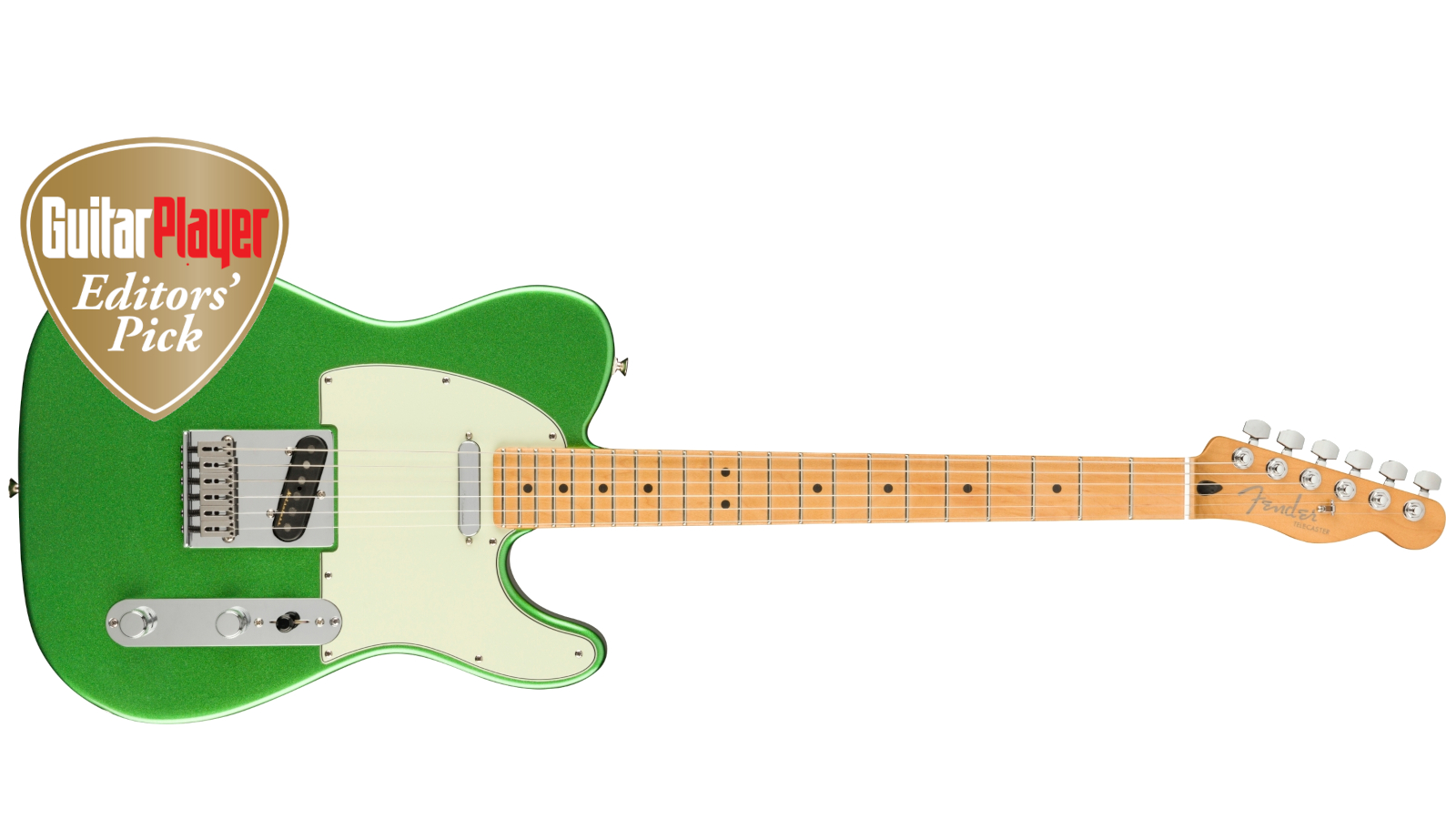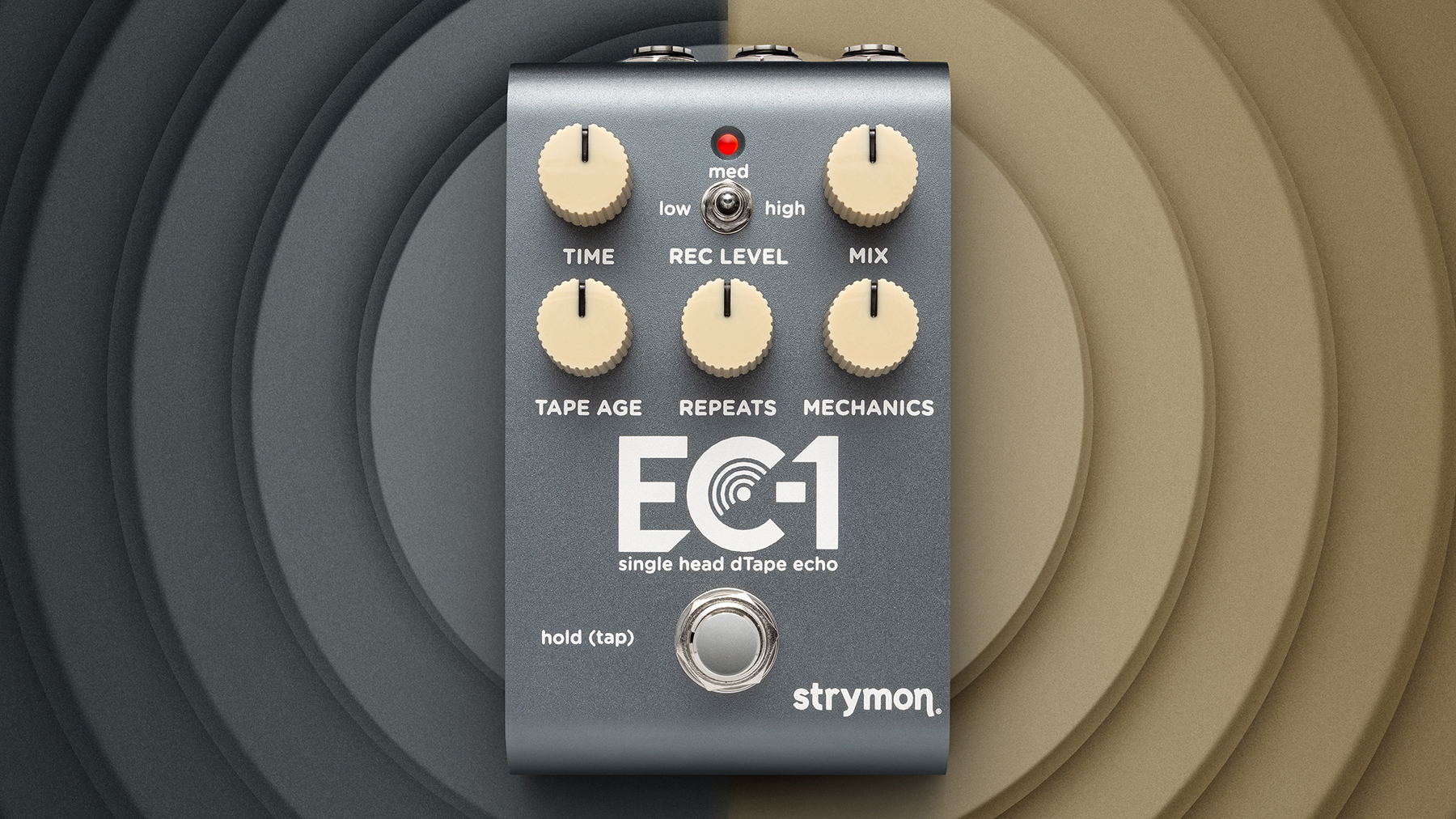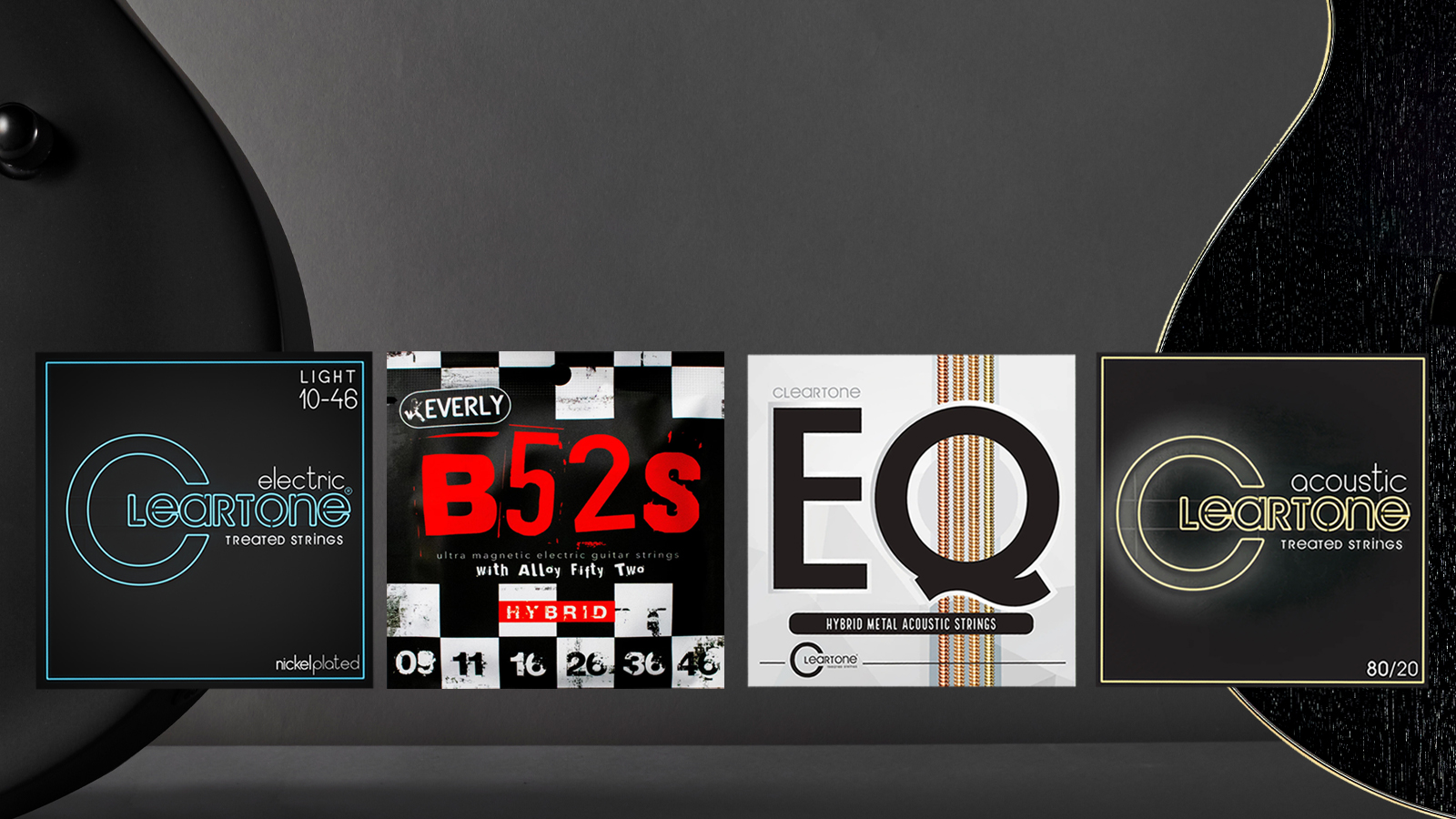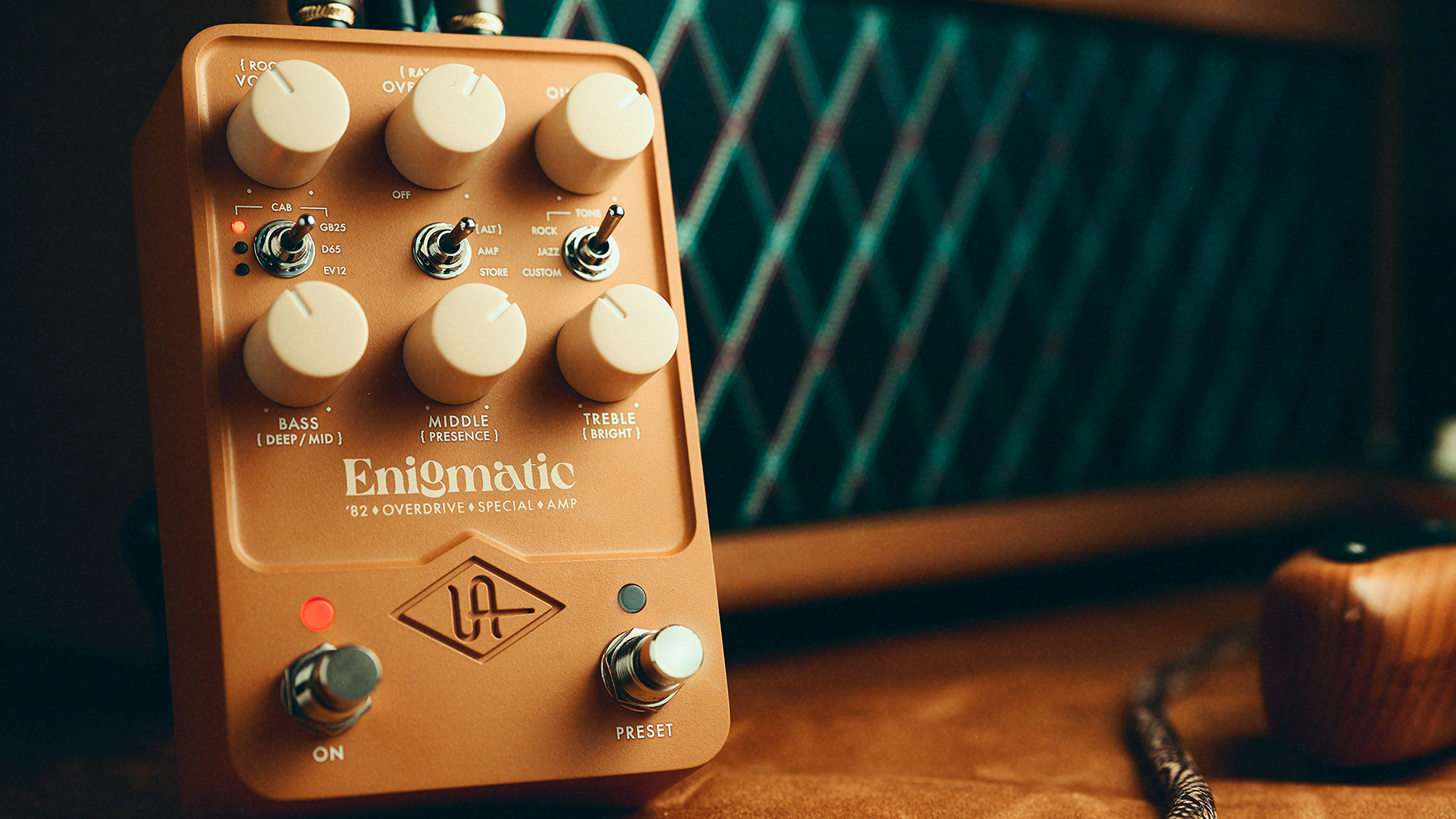GuitarPlayer Verdict
For significantly less cash than the going rate, this guitar represents good value for money in a do-it-all Tele that will likely acquit itself well in any situation where the legendary bolt-neck, single-cut, two-pickup original shines.
Pros
- +
A clever and well-constructed update of the classic Telecaster, honoring traditional looks, feel and tone while bringing specs into the 21st century
Cons
- -
The modern “C” neck shape might not suit some fans of deeper, more rounded ’50s “D” and “C” shapes
You can trust Guitar Player.
As it winds down its 75th year in business, Fender continues to show it can still get great value and contemporary performance out of designs that have been with us since the middle of the last century. That premise virtually defines the newly released Player Plus Series, Fender’s new step up from 2018’s Player Series, and is perhaps most fully embodied in the Player Plus Telecaster. This guitar exemplifies the marriage of golden-age originality – that of the first mass-marketed solidbody electric guitar, no less – and 21st century upgrades, resulting in a guitar that retains the spirit of the original in an adaptation better suited to the demands of today’s guitarists.

The full Player Plus Series model list includes a Stratocaster, Stratocaster HSS, Nashville Telecaster (with three pickups), Jazz Bass, Jazz Bass V and Precision Bass. At a glance, this lineup might appear to be more affordable versions of the American Ultra Series, where Fender’s upscale line takes on modern neck specs, hardware refinements and noiseless pickups, but the details aren’t entirely like-for-like between the two series. Different neck shapes, for example, might tilt some players toward the Player Plus models, regardless of price, though saving $1,000 in the bargain doesn’t hurt matters.

In terms of looks, Fender has gone with the classics: traditional body and headstock shapes, spaghetti logo and simple dot inlays on a maple fingerboard (pau ferro is also available). Examined more closely, the Player Plus Telecaster reveals a plethora of updates, though for many players that degree of adherence to tradition will be what matters most, and the fact that it looks like a Tele, feels like a Tele and sounds like a Tele will be the main boxes worth checking. In fact, there’s nothing much here to put off traditionalists, provided they’re at least willing to fold in a few performance upgrades and get along with modernized neck profiles. Even an old Telecaster purist should be able to pick up this plank and fly, as we certainly did.
Dig deeper, though, and the Player Plus updates are numerous. The alder body sports the iconic curves, router hump and all, but there’s a ribcage contour that makes longwinded playing exponentially more comfortable. Playing comfort extends to the revamped neck shape on these guitars, too, which Fender describes as a modern “C” with a 12-inch radius and rolled fingerboard edges. This profile would normally be a tad thinner than our usual personal preference, but it’s superbly ergonomic in the hand, and after several minutes of riffing, we stopped thinking about it entirely. Fender has also upped the neck’s real estate with a 1 11/16-inch width at the nut and a 22nd fret on a fingerboard extension, further modifications that most modern players will welcome.

Hardware includes six individual steel-block saddles on the steel bridge plate, a modernization that will boost intonation and, arguably, string-to-string articulation, and there’s a set of locking Fender tuners up top, with a string tree for the B and high-E strings. Pickups are Fender’s Player Plus Noiseless Telecaster single-coils, offering traditional looks and tones without the hum. They’re wired with the customary master volume and tone controls and a three-way selector switch, but there’s a push-pull on the tone knob to connect the pair in series for a thicker, more humbucker-like sound.

Further nods to modernity include a headstock-end truss-rod adjustment point, stylishly disguised in the “teardrop,” where the end of the in-fill skunk stripe is normally revealed, and external adjustment screws for the neck pickup so you don’t have to pull the tasty mint-green, eight-screw pickguard to tweak the height.
Otherwise, one of the most notable features extends to the entire range in a raft of new finish options, a selection of which are divvied up per model. The Player Plus Telecaster is available in Three-Color Sunburst, Silver Smoke (a graduated black-to-silver fade), Aged Candy Apple Red and Cosmic Jade, which graces our review guitar. It’s a tasty, metallic mid-green hue that has been very well applied and immaculately buffed, and it proves a surprisingly good complement to the more vintage-like aged satin natural of the neck.

Tested with a Friedman Mini Dirty Shirley combo, a custom tweed Deluxe-style combo and a Neural DSP Quad Cortex into studio monitors, the Player Plus Telecaster immediately revealed the bright, twangy bridge setting, spanky middle position and throaty neck that you expect from a good Tele. Put simply, this guitar easily does anything you’d turn a classic Telecaster toward, yet with a little more sonic range and a pleasant absence of 60-cycle hum.
Delving deeper into the sonic signature, this configuration of woods, bridge and pickups might lack just a hair of the midrange grit and high-end sizzle that a meaty vintage-voiced Tele delivers (whether original or reissue), and leans a little tight and contemporary instead, but it’s a great and versatile palette of tones that likely won’t inhibit anything you throw at it, either. The clarity and precision translate well to a selection of overdrive tones, too, whether from the Friedman’s high-gain setting or with either a JHS Bonzai or Gas FX Drive Thru injected into the 5E3 combo. All of that gets immensely thicker with the girthsome series setting engaged, which is also great for thicker, blues guitar lead work with an edge-of-breakup amp and full-voiced jazz chord-melody back into cleaner setting.
Not that it’s a radical departure from the norm, but the Player Plus is one of the more enjoyable modernized Telecasters we’ve played in a while, and some quality time with the instrument confirms that everything here has been done for a reason, and done well. If you’d told us it was an addition to the American lineup, we likely wouldn’t have thought twice. But for significantly less cash than the going rate, it represents good value for money in a do-it-all Tele that will likely acquit itself well in any situation where the legendary bolt-neck, single-cut, two-pickup original shines.
For this job well done, the Fender Player Plus Telecaster earns an Editors’ Pick Award.
Specifications:
- NUT WIDTH 1 11/16”, synthetic bone
- NECK Maple, Modern “C” profile
- FRETBOARD Maple, 25.5” scale length, 12” radius
- FRETS 22 medium-jumbo
- TUNERS Fender locking
- BODY Solid alder
- BRIDGE Steel base plate with individual steel-block saddles, through-body stringing
- PICKUP Two Fender Player Plus Noiseless Telecaster pickups
- CONTROLS Volume and tone controls, three-way switch, push-pull on tone for in-series wiring
- FACTORY STRINGS Fender USA 250LR Nickel Plated Steel .009–.046
- WEIGHT 7.6 lbs
- BUILT Mexico
Dave Hunter is a writer and consulting editor for Guitar Player magazine. His prolific output as author includes Fender 75 Years, The Guitar Amp Handbook, The British Amp Invasion, Ultimate Star Guitars, Guitar Effects Pedals, The Guitar Pickup Handbook, The Fender Telecaster and several other titles. Hunter is a former editor of The Guitar Magazine (UK), and a contributor to Vintage Guitar, Premier Guitar, The Connoisseur and other publications. A contributing essayist to the United States Library of Congress National Recording Preservation Board’s Permanent Archive, he lives in Kittery, ME, with his wife and their two children and fronts the bands A Different Engine and The Stereo Field.
Guitar Center's Guitar-A-Thon is back, and it includes a colossal $600 off a Gibson Les Paul, $180 off a Fender Strat, and a slew of new exclusive models
"We tried every guitar for weeks, and nothing would fit. And then, one day, we pulled this out." Mike Campbell on his "Red Dog" Telecaster, the guitar behind Tom Petty & the Heartbreakers' "Refugee" and the focus of two new Fender tribute models














